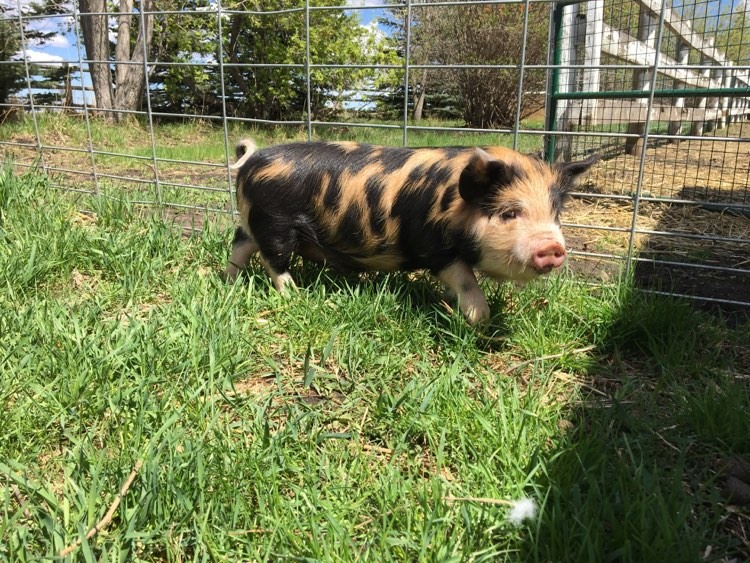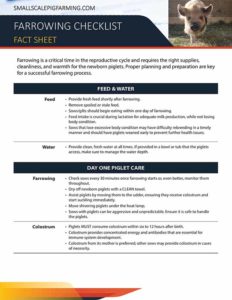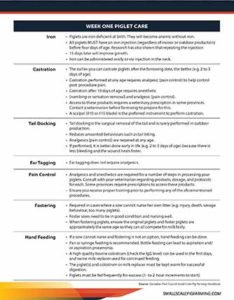Farrowing Preparation
There are number of things that you need to plan for prior to the start of farrowing. Proper planning will lead to a fewer complications and greater success and healthier pigs moving forward.
- Thoroughly wash, disinfect, and dry farrowing area (for indoor farrowing facilities). For outdoor facilities ensure buildings/shelters/pens are cleaned to the best of you ability. Also ensure any repairs that are necessary are completed prior to moving sows/gilts into the area.
- Provide adequate bedding (straw/wood shavings) material.
- Move sows into the farrowing area approximately one week prior to their estimated farrowing date. It is important for sows to acclimatize to their surroundings prior to farrowing.
- Keep the farrowing area clean and remove manure daily.
- Additional heat sources (heat lamps, heat pads) are
required for piglets, most importantly during their first week. It is very important to monitor temperature in the creep (piglet) area.- Ensure piglets do not get too hot or cold. Newborn piglets prefer an ambient temperature of 35°C (although the sow prefers it around 18°C).
Farrowing Supplies
In some cases, you will be required to assist in the farrowing process. Specific supplies will be required to do so effectively without compromising the health of the sow and piglets.
- Obstetric gloves (large animal)
- Lube
- Bucket and access to clean, warm water
- Soap
- Disinfectant (e.g. iodine)
- Clean towels
- Pharmaceuticals. Contact your veterinarian for prescriptions and protocols for use.
What to Expect
- Sows/gilts can lose their appetite close to farrowing.
- Farrowing takes approximately one to six hours.
- Gilts tend to take longer to farrow than sows.
- Piglets should be born approximately 15–20 minutes apart, head or feet first.
- Afterbirth typically appears after the last piglet.
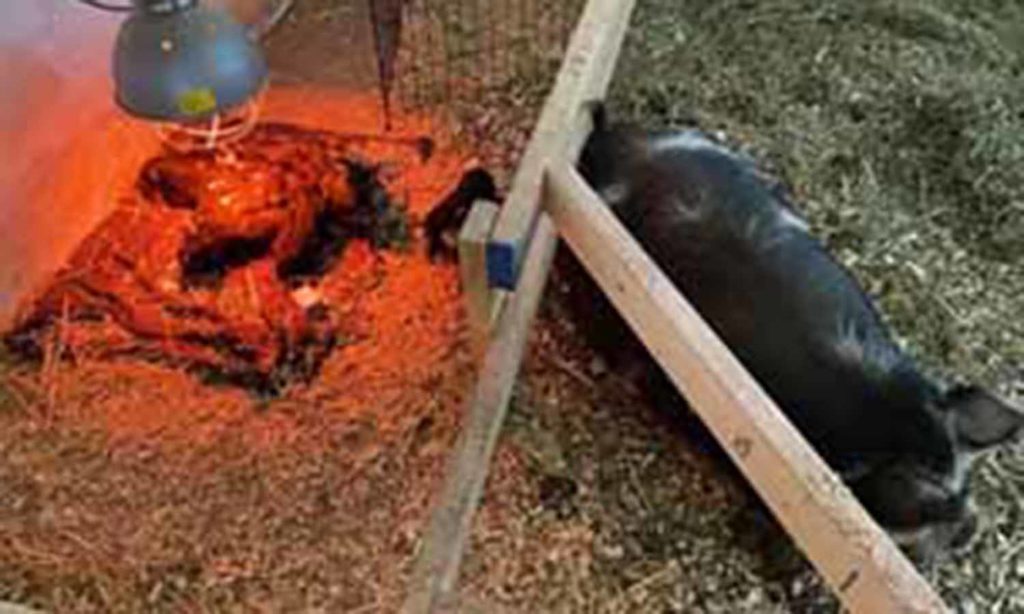
Additional heat sources, such as heat lamps, are important for piglet survival, especially during the first week and during colder months.
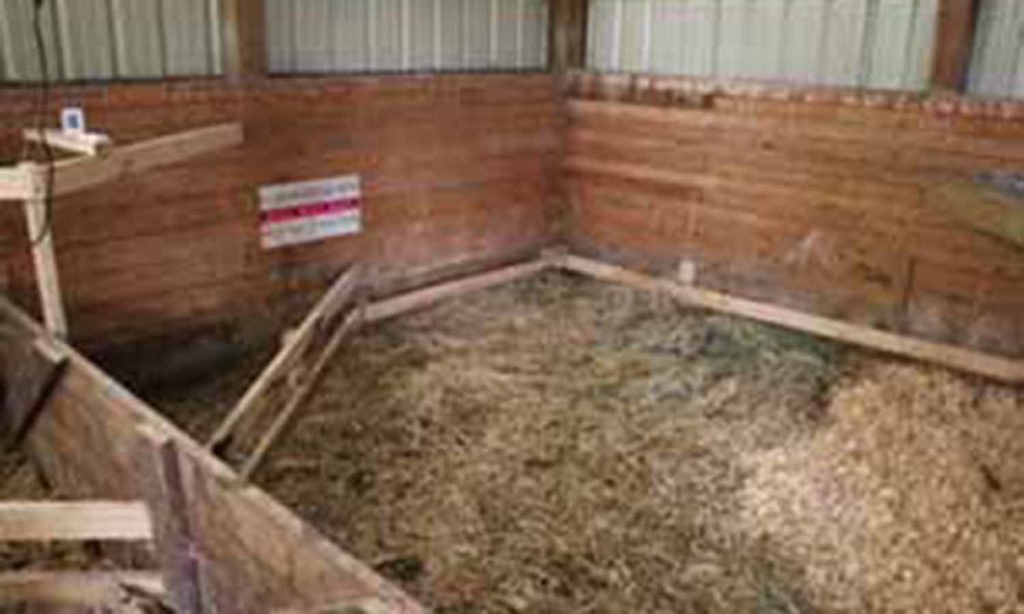
Ensure the farrowing area is thoroughly cleaned and disinfected, and adequate bedding is provided well in advance of the estimated farrowing date.
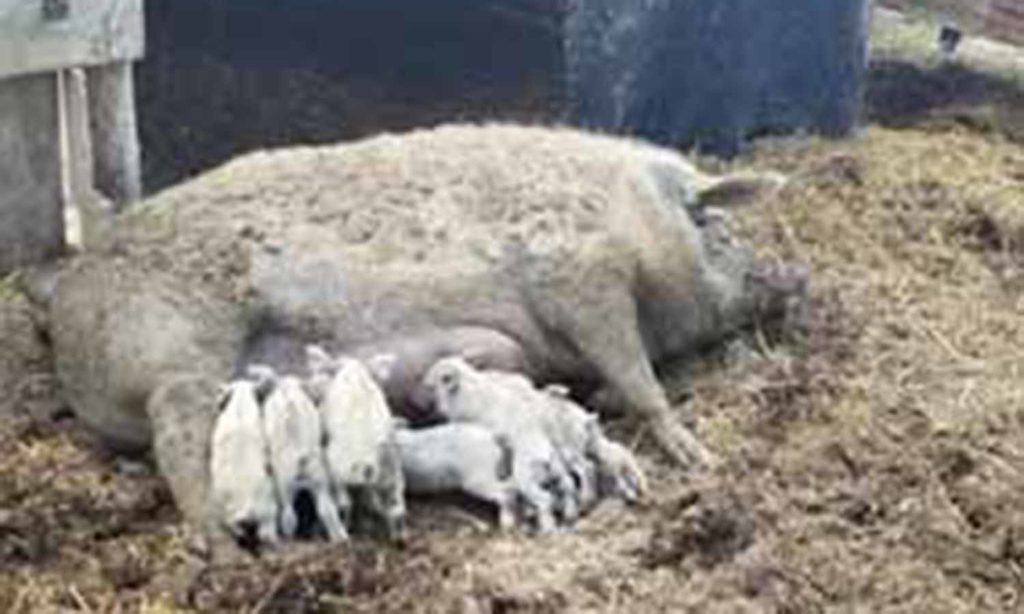
Ensuring piglets receive colostrum is one of the most important parts of the farrowing process. Without it, piglets cannot effectively development an immune response to future health challenges.
